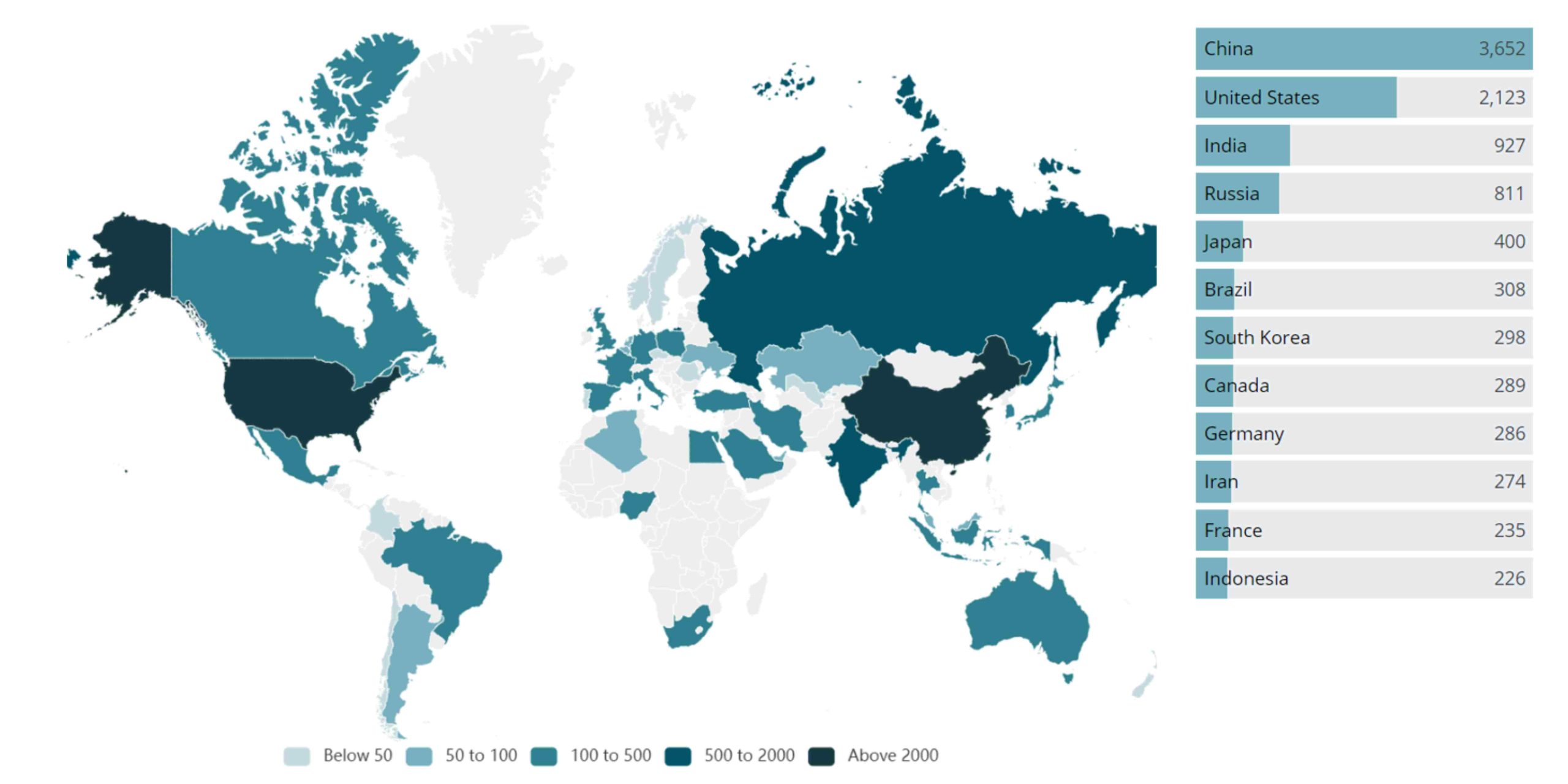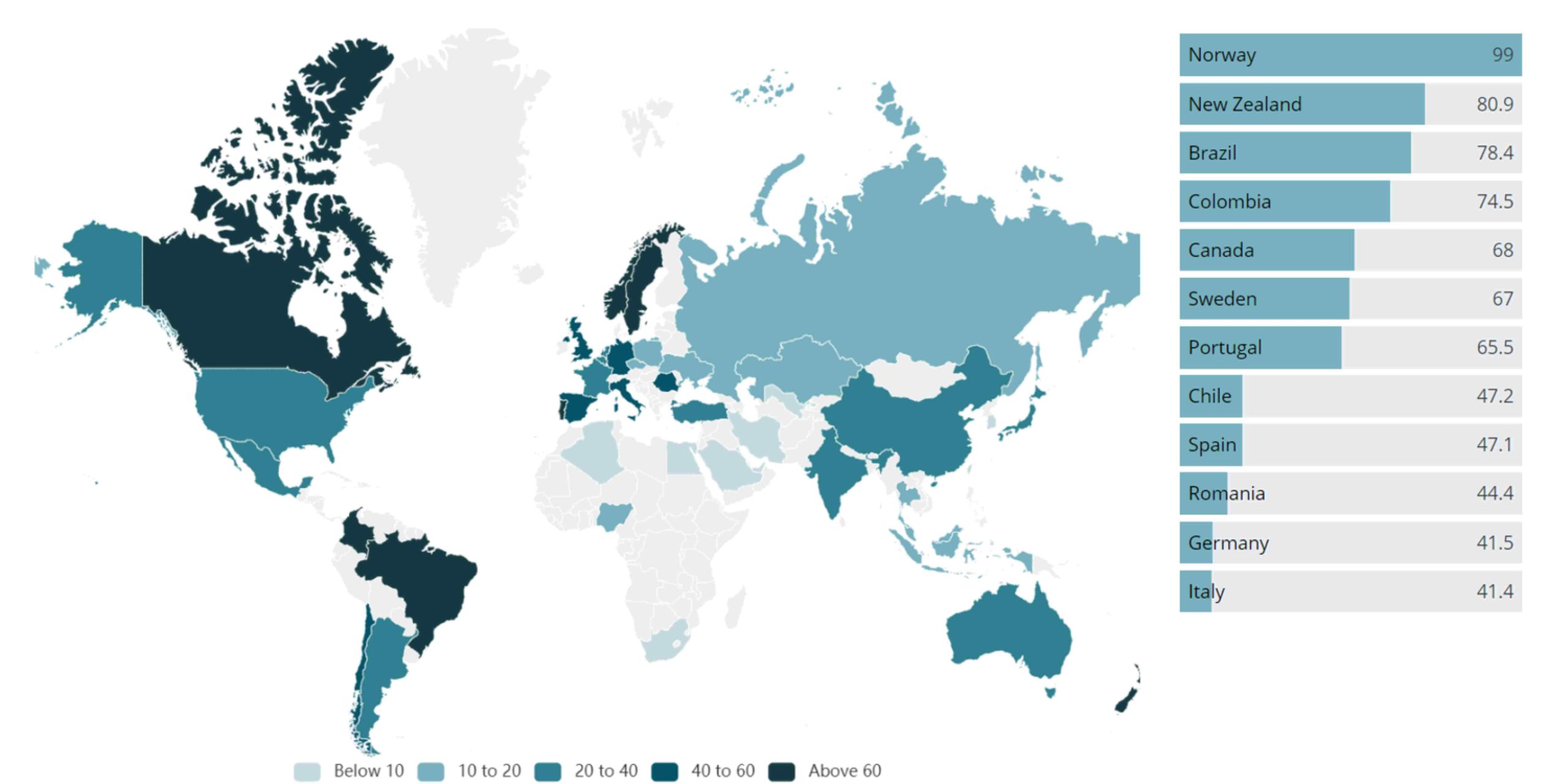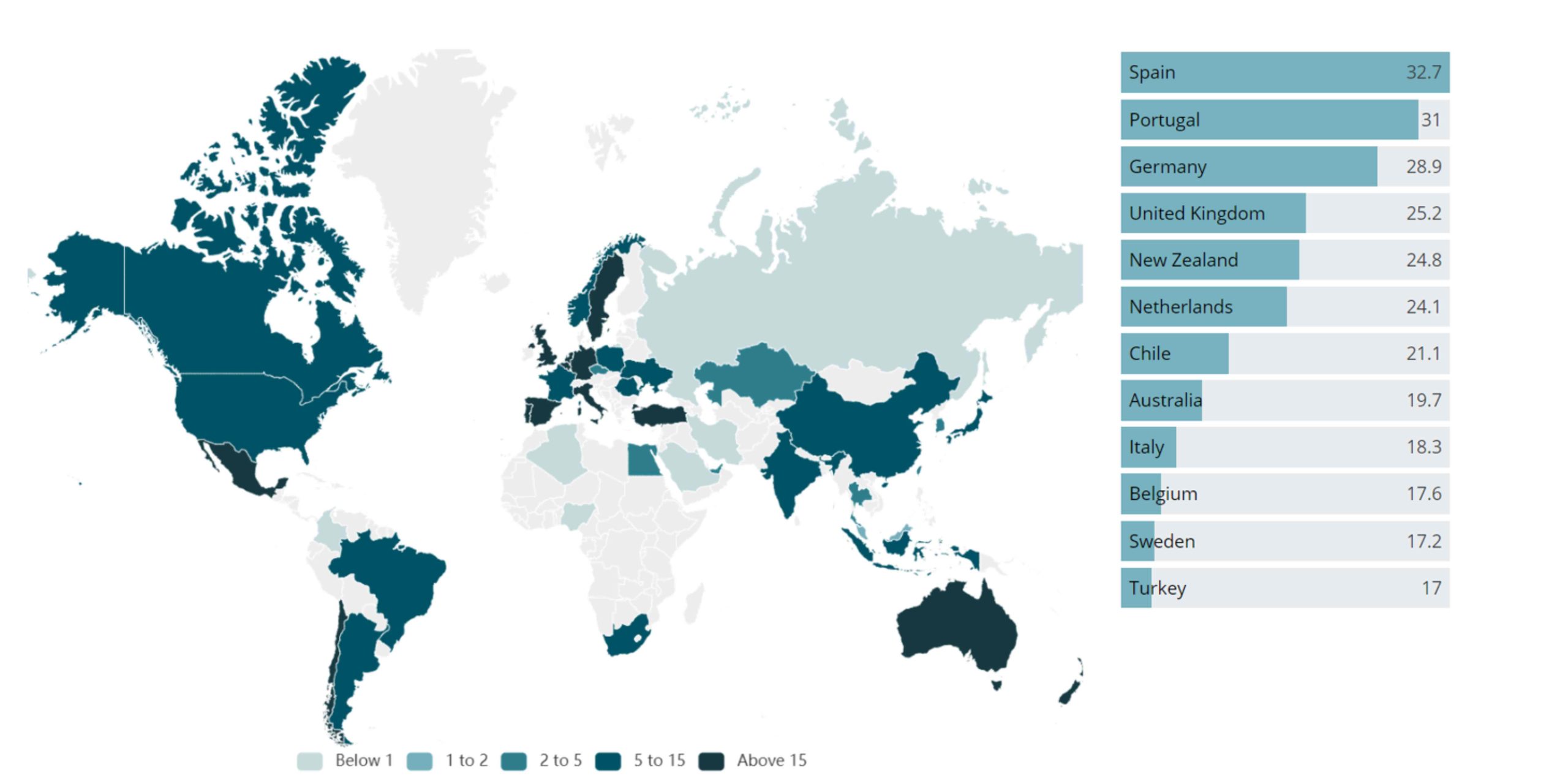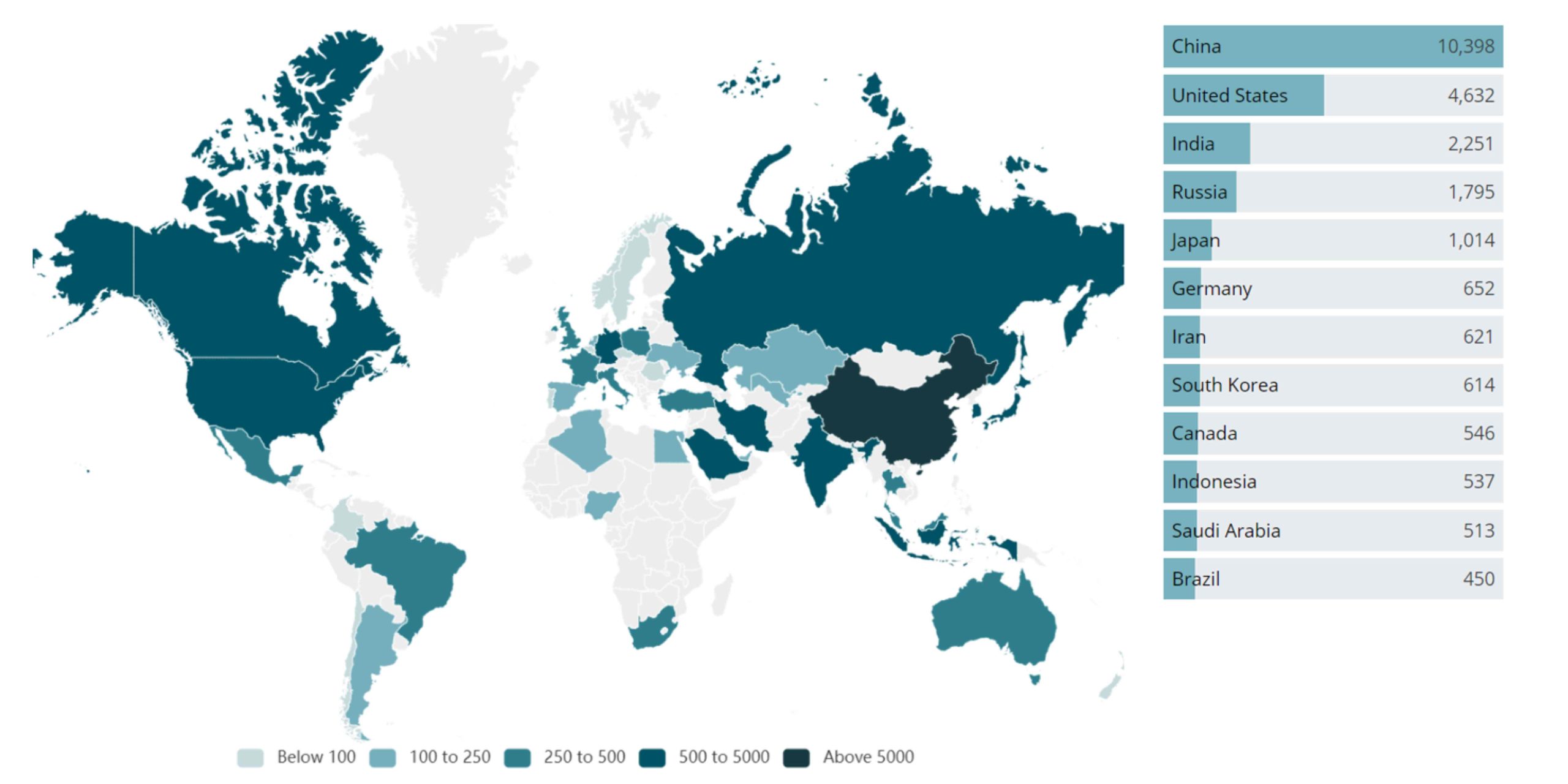A Breakdown of Energy Usage by Country
Which countries are leading the world in renewable energy production?And which nations are most responsible for the worldwide impacts of climate change?
Understanding the global energy landscape is crucial for addressing climate change and promoting sustainable development. In this blog, we explore the energy consumption, renewable energy reliance, solar and wind power production, and carbon dioxide emissions of various countries.
The data presented below is based on information from Enerdata’s World Energy and Climate Statistics for 2021.
1) Which countries consume the most energy? Total energy usage by country in 2021 (Units: Million Tons of Oil Equivalent)

Figure 1: Total energy usage by country in 2021 (Units: Million Tons of Oil Equivalent)
It probably comes as no surprise that the most populous countries, including China, India, Russia, and the United States consume the most energy, but which countries consume the least? Rounding out the bottom are New Zealand, Portugal, Norway, and Kuwait, each consuming less than one-hundredth as many mtoes (million tons of oil equivalent) as China.
2) Which countries rely on the least non-renewable energy?

Figure 2. Renewable Energy Usage By Country in 2021
Norway has almost entirely achieved fossil-fuel independence, largely due to their abundant hydropower supply. It should be noted, however, that although Norway itself does not use many fossil fuels, it is the third-leading exporter of natural gas and the eight-leading exporter of crude oil, two sectors that likely will not be vanishing soon due to their heavy economic benefits. Rounding out the bottom are mostly countries from the Middle East, like Saudi Arabia, Algeria, and Iran, famous for their oil.
3) Which countries produce the most solar and wind power?

Figure 3: Solar and wind production by country in 2021 (%)
Interestingly, Spain produces almost 1/3 of the world’s solar and wind power, largely because it is not only one of the European countries with the most hours of sunshine, but also because it was one of the first nations to deploy large scale photovoltaics. Neighboring countries such as Portugal, Germany, the UK, and the Netherlands follow closely after, with countries like Saudi Arabia, Iran, Algeria, and Egypt still rounding out the bottom.
4) Which countries emit the most carbon dioxide?

Figure 4: CO2 Emissions by country in 2021 (metric tons)
Similar to the countries that consume the most electricity, China, the United States, India, Russia, and Japan lead the world in CO2 emissions, with China producing almost five times as many emissions as India despite having nearly the same population.
New Zealand, Sweden, Portugal, Norway, and Romania finish with the least emissions, each producing less than one-hundred-fiftieth as many emissions as China.
Understanding the energy usage breakdown by country provides insights into the leading nations in renewable energy production and the global impacts of climate change.
It is essential for policymakers, businesses, and individuals to use this information to drive sustainable practices and reduce carbon emissions.
By promoting renewable energy adoption and minimizing reliance on non-renewable sources, we can work towards a cleaner and more sustainable future.
You can find more detailed data and explore additional trends in Enerdata’s World Energy and Climate Statistics for 2021!
Sources:
- Enerdata World Energy and Climate Statistics for 2021 – https://yearbook.enerdata.net/






